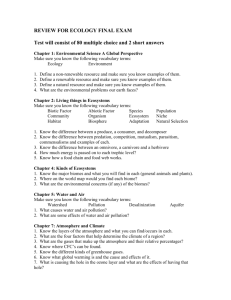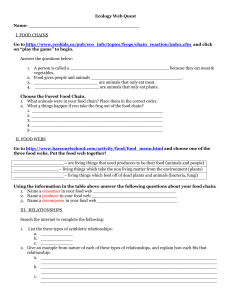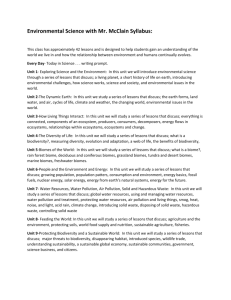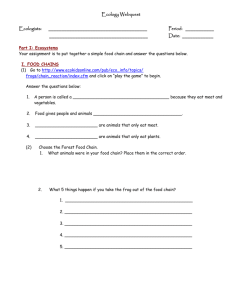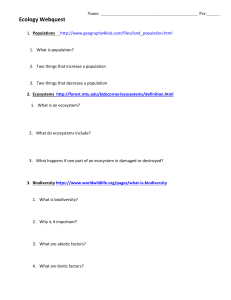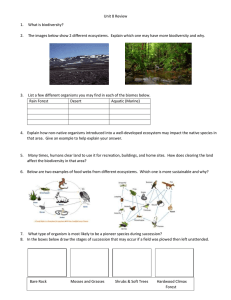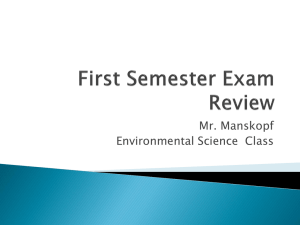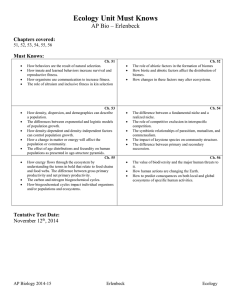Environmental Science Syllabus
advertisement
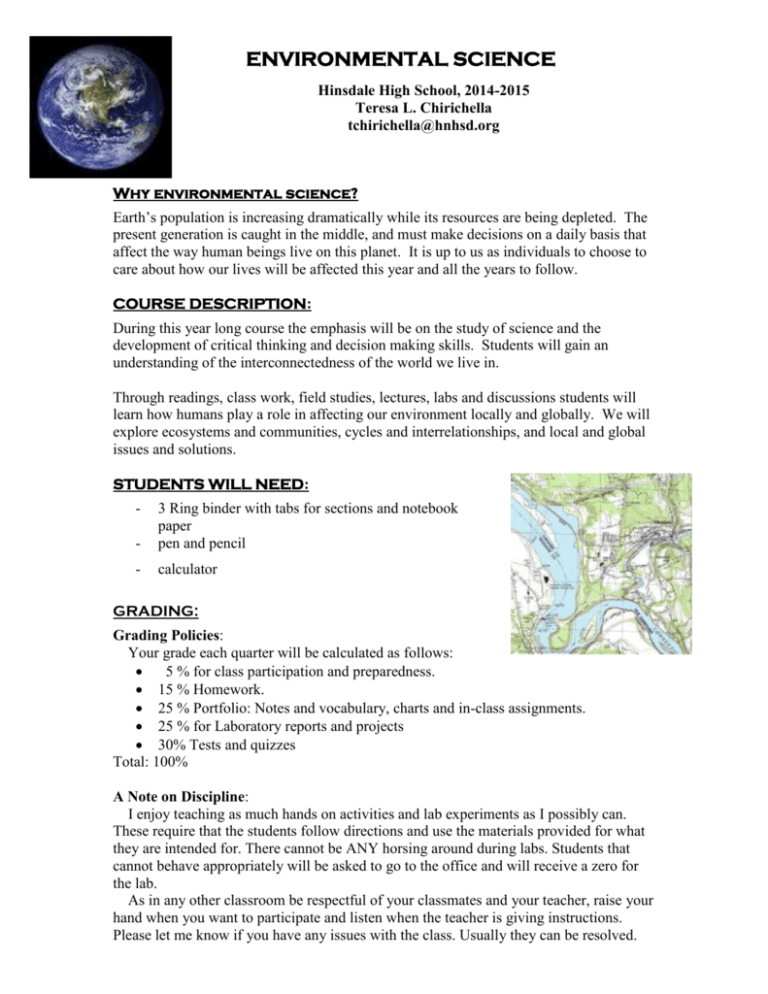
ENVIRONMENTAL SCIENCE Hinsdale High School, 2014-2015 Teresa L. Chirichella tchirichella@hnhsd.org Why environmental science? Earth’s population is increasing dramatically while its resources are being depleted. The present generation is caught in the middle, and must make decisions on a daily basis that affect the way human beings live on this planet. It is up to us as individuals to choose to care about how our lives will be affected this year and all the years to follow. COURSE DESCRIPTION: During this year long course the emphasis will be on the study of science and the development of critical thinking and decision making skills. Students will gain an understanding of the interconnectedness of the world we live in. Through readings, class work, field studies, lectures, labs and discussions students will learn how humans play a role in affecting our environment locally and globally. We will explore ecosystems and communities, cycles and interrelationships, and local and global issues and solutions. STUDENTS WILL NEED: - 3 Ring binder with tabs for sections and notebook paper pen and pencil - calculator GRADING: Grading Policies: Your grade each quarter will be calculated as follows: 5 % for class participation and preparedness. 15 % Homework. 25 % Portfolio: Notes and vocabulary, charts and in-class assignments. 25 % for Laboratory reports and projects 30% Tests and quizzes Total: 100% A Note on Discipline: I enjoy teaching as much hands on activities and lab experiments as I possibly can. These require that the students follow directions and use the materials provided for what they are intended for. There cannot be ANY horsing around during labs. Students that cannot behave appropriately will be asked to go to the office and will receive a zero for the lab. As in any other classroom be respectful of your classmates and your teacher, raise your hand when you want to participate and listen when the teacher is giving instructions. Please let me know if you have any issues with the class. Usually they can be resolved. Course Outline UNIT 1: Introduction to Environmental Science. 1. The Study of Environmental Science. 2. Environmental Science vs. Ecology. 3. The Environment Through Time 4. Current Environmental Issues. 5. Economics and the Environment. Sustainability LAB 1: Studying an Ecosystem (Outdoors). LAB 2: Indicator Species in a River Ecosystem (Field Trip) LAB 3: Artificial Selection of Plants. How have humans changed plant species (long term investigation). UNIT 2: Tools of Ecology and Environmental Science. 1. Overview of the Scientific Method. 2. Statistics and Mathematical Models. 3. Decision Making Models. LAB 4: Statistical Analysis of a Population of Conifers (Outdoors) UNIT 3: The Earth as a System. 1. Levels of Organization in Ecology. 2. Energy Flow in Ecosystems. 3. Element Cycles. 4. Changes in Ecosystems. Ecological Succession. 5. Aquatic Ecosystems LAB 5: Hydrothermal Vents Lab. LAB 6: Bio-accumulation Model. LAB 7: Eutrophication. UNIT 4: The Study of Populations and Communities. 1. Population size and growth. 2. Carrying Capacity. 3. Organism’s Niche. 4. Species Interactions. 5. The human Population. LAB 8: Estimating Population Size. LAB 9: Population Growth models. LAB 10: Competitive Exclusion. (on line) LAB 11: Habitat Selection. (Possible field trip to Raptor Observatory) UNIT 5: Biomes and Biodiversity. 1. Biomes and Climate. 2. The Different Biomes (Student prepared presentations) 3. Biodiversity. 4. Risks to Biodiversity. 5. Conservation Efforts and Current Legislations. LAB 11: Measuring Diversity of two Sample Plots. UNIT 6: Water and Air. 1. Water resources. 2. Water Use and Management. 3. Water pollution and Water Treatment. 4. Air pollution. Indoor and Outdoor Pollution. 5. Acid Precipitation. 6. Green house gases. 7. Ozone layer LAB 12: Designing a Water Filter. LAB 13: Suspended Particulates in the Air. (Possible Visit to Water Treatment Plant) -----------------------------------------Final Exam-----------------------------------------------
